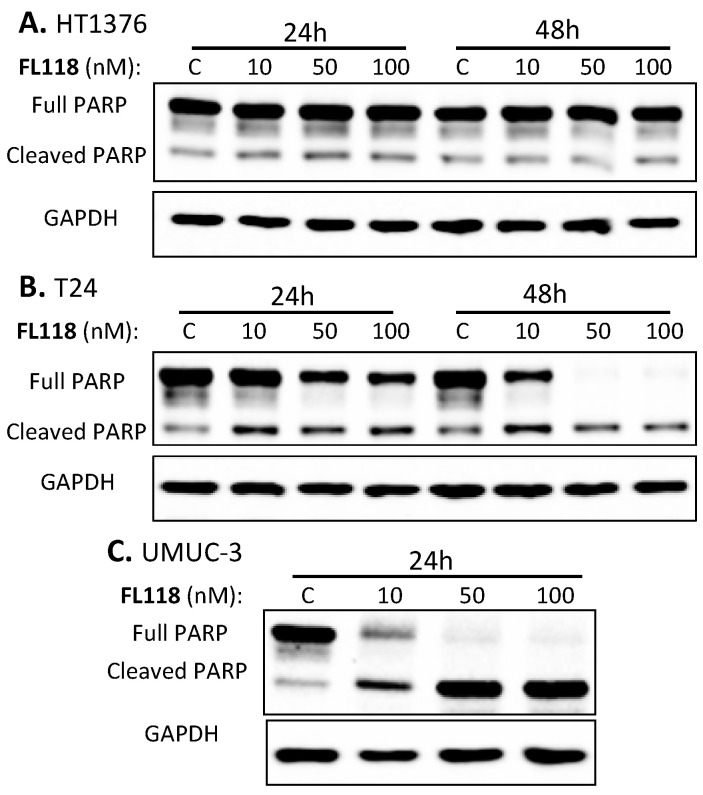Figure 2.
Induction of differential poly (ADP-ribose) polymerase (PARP) cleavage in bladder cancer cells by FL118. Subconfluent bladder cancer cells in 60 mm plates were treated with DMSO (as a vehicle) or with 10, 50 and 100 nM FL118 for 24 h and/or 48 h, as shown, followed by Western blot analyses to determine PARP cleavage. (A) HT-1376 cells with wild-type Ras show no significant PARP cleavage after 24 or 48 h FL118 treatment. (B) T24 cells with Hras G12V mutation showed the cleavage of PARP with all concentrations of FL118 treatment. (C) mutant Kras (UMUC-3) cells with Kras G12C mutation showed the maximum PARP cleavage with the disappearance of total PARP bands after 24 h FL118 treatment. GAPDH (glyceraldehyde 3-phosphate dehydrogenase) shown in A, B and C were used as internal controls of total protein-loading.

